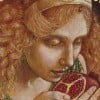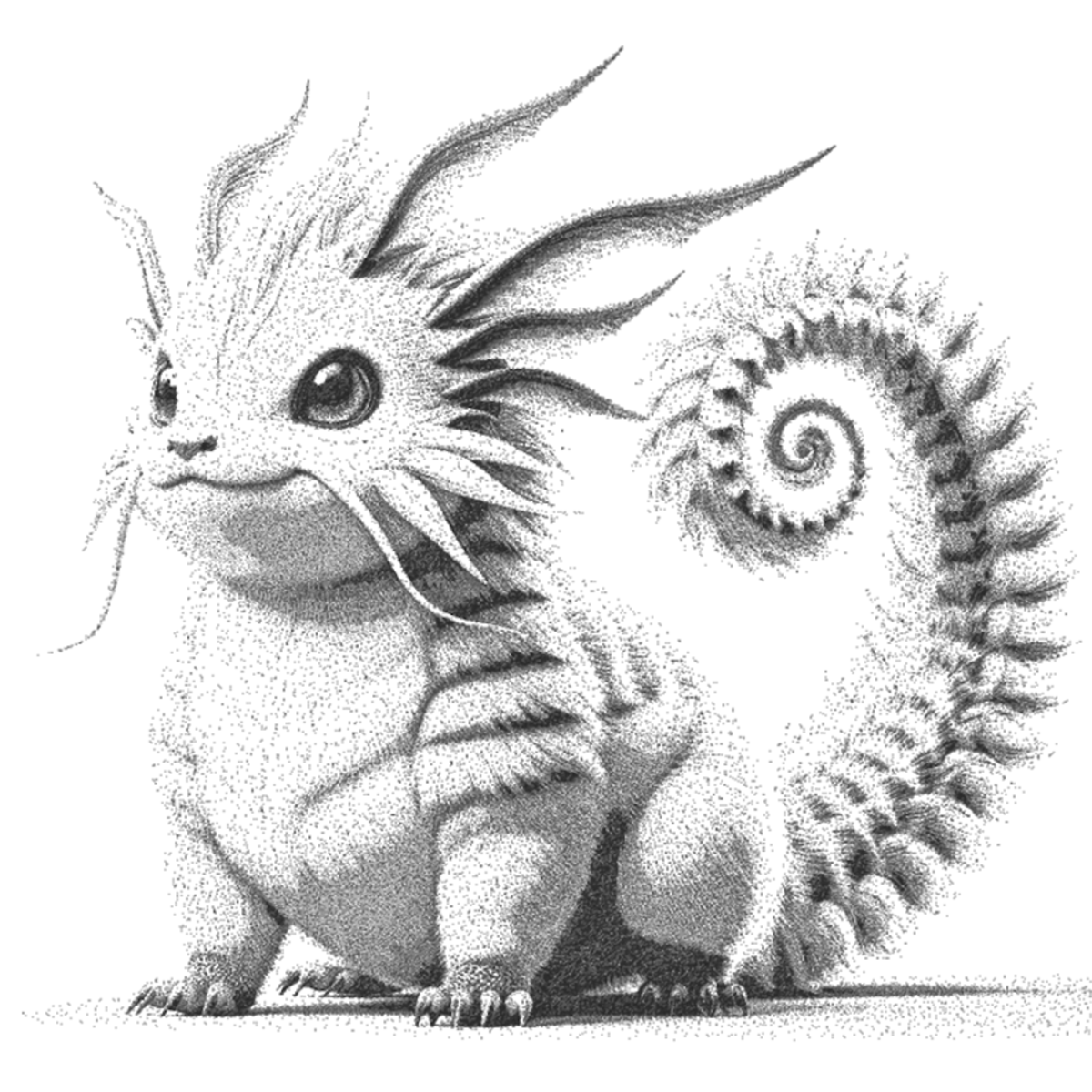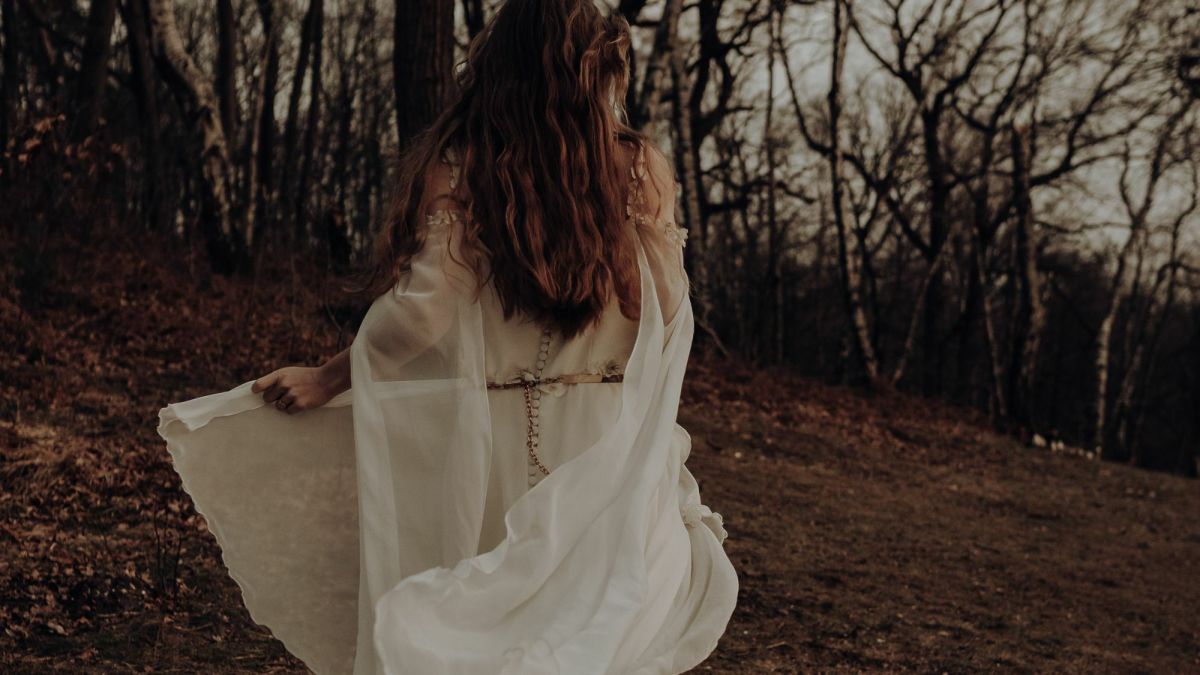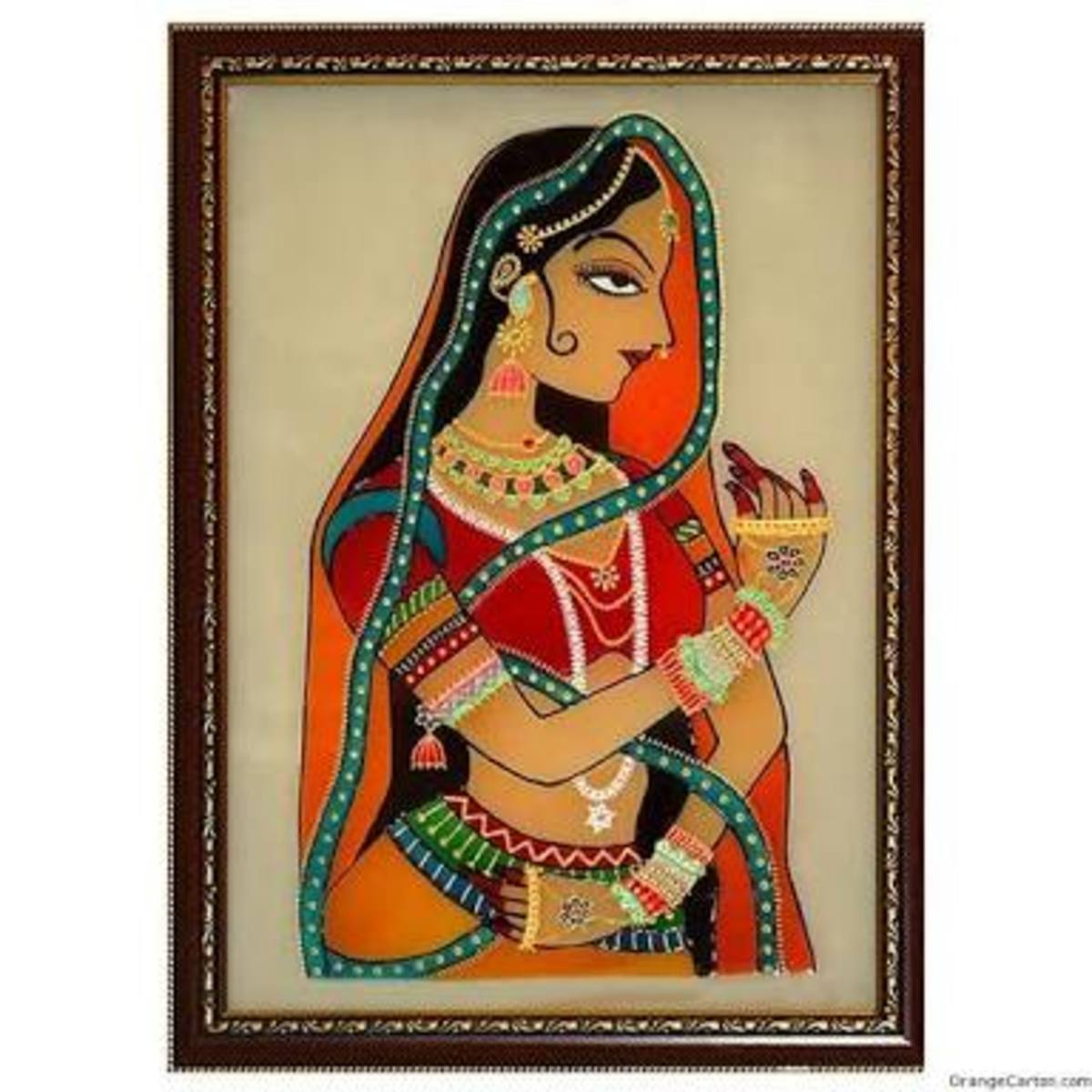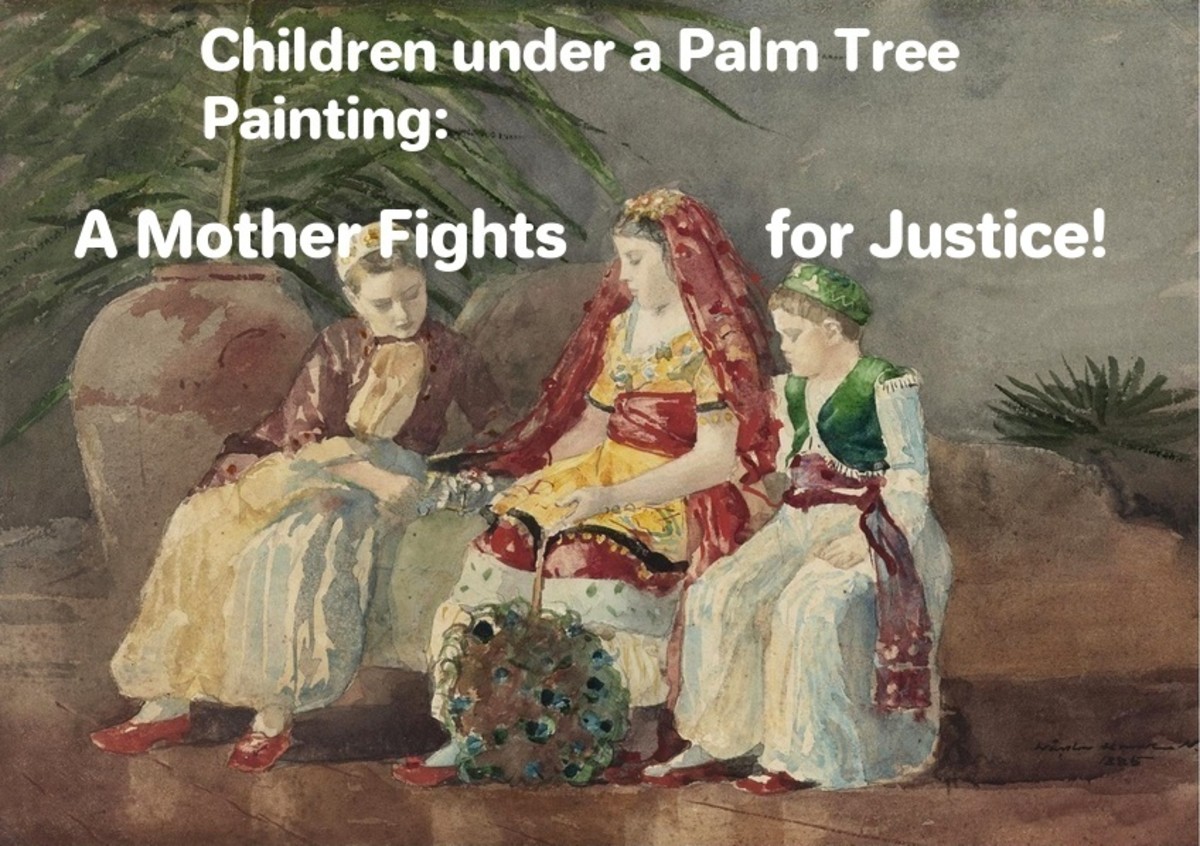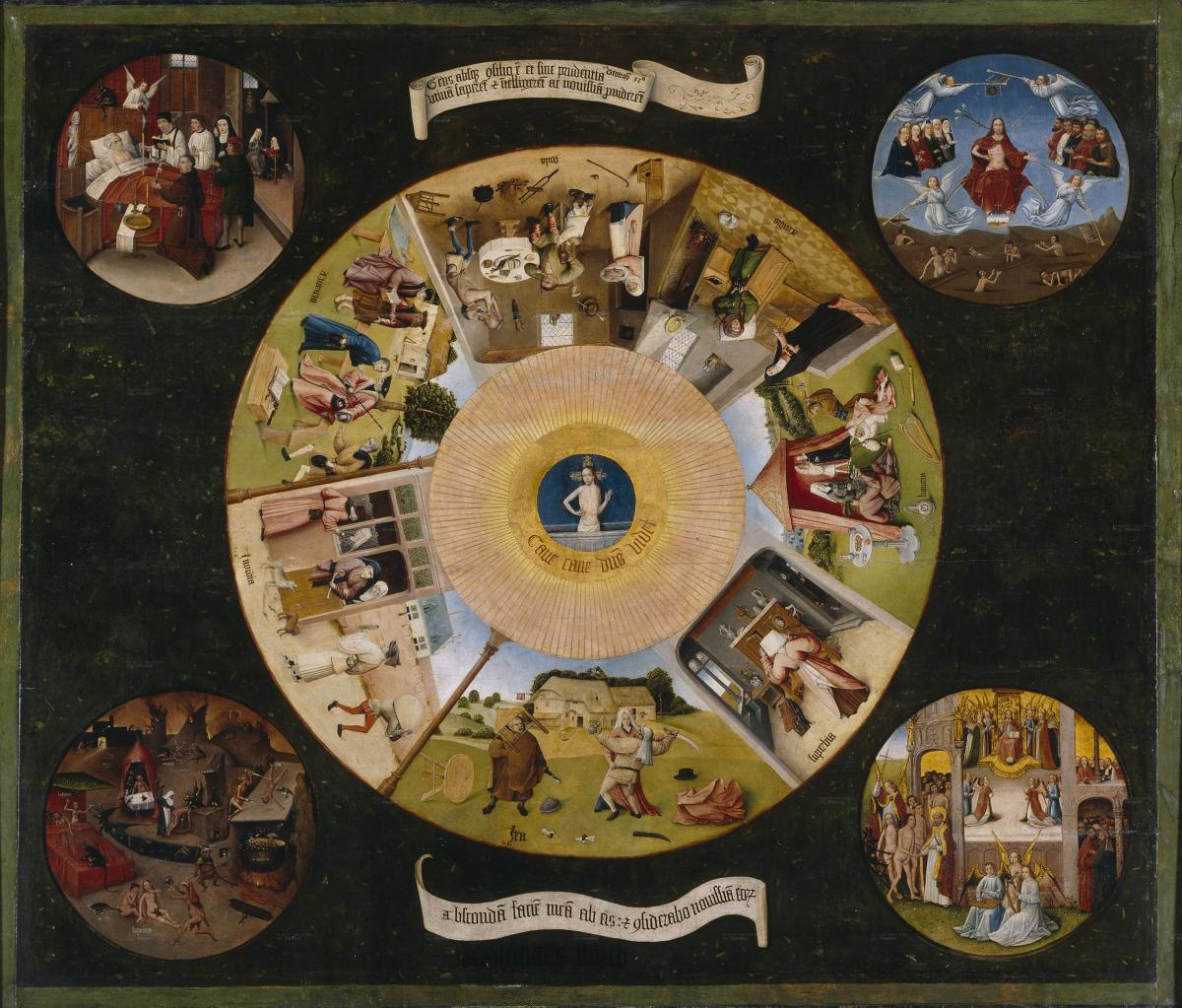Holman Hunt and the Pre-Raphaelites
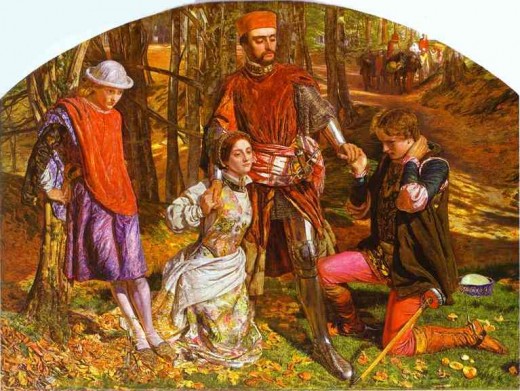
William Holman Hunt was born April 2, 1827, in Cheapside, London. He was one of the very first pre-Raphaelites, and may have actually initiated that movement in art. He was by his very nature and in his very soul an artist: still, his initial application to the Royal Academy art schools was rejected.
After his eventual acceptance into the Royal Academy to study art, William Holman Hunt, or Holman Hunt, as he became known as an artist, rebelled against the conventions of art as dictated by the school. The Royal Academy laid down the principles of "good" art according to the dictates of its founder, Sir Joshua Reynolds, whose famous works are portraits of royalty and the wealthy upper class. That art is formal and rather stiff.
Holman Hunt very much preferred the look and feel of art from an earlier time, from before Raphael and the Renaissance; hence, Holman Hunt was a "pre-Raphaelite". It was a reversion to an earlier era in art.
Holman Hunt was a more spiritual painter. His subjects were often religious subjects, or subjects with a moral behind them. Holman Hunt admired medieval art--the richness of its colors, the blatant religiousness of its subjects, and the vivid, though stylized, mannerisms of its patina and coat.
In Holman Hunt's time, there was a reaction to the intense, naive religious beliefs of previous centuries in the Victorian era in England. Science was just coming into its own. New inventions, and the discovery of electricity, and the whole industrialization of England had replaced the more bucolic atmosphere with one of moving forward, rationalism, all-conquering science.
So Holman Hunt's predilection for medieval art, his pre-Raphaelite style, was going very much against the grain of the times he lived in.
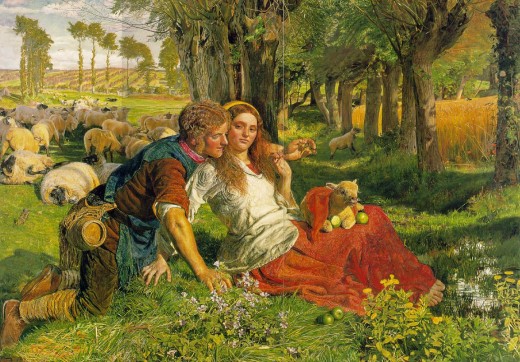
So Holman Hunt started the pre-Raphaelite school of art in 1848, after meeting Dante Gabriel Rossetti.
Holman Hunt's artwork was much criticized by the critics, initially. It was deemed "ugly", or "clumsy", or, "naive" (as it was intended to be naive work, I wonder if Holman Hunt was actually too upset by that label!).
He chose religious subjects. He chose pastoral subjects, and his work was definitely reminiscent of the medival period in art. Holman Hunt was perceived to be a reactionary, a throw-back as an artist.
What Holman Hunt was after, and why his work has survived and has so much power that we can still percieve it today, is to inspire a deep religious feeling in his viewers. He looked to reform and revitalize art from the still, dead thing it became during the more rational times he lived in. He wanted to arose feelings in his viewers. He wanted his viewers to see his paintings, and believe once again.
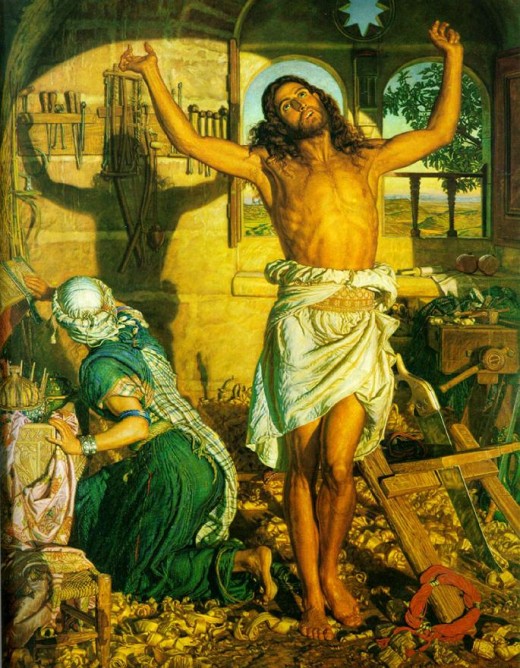
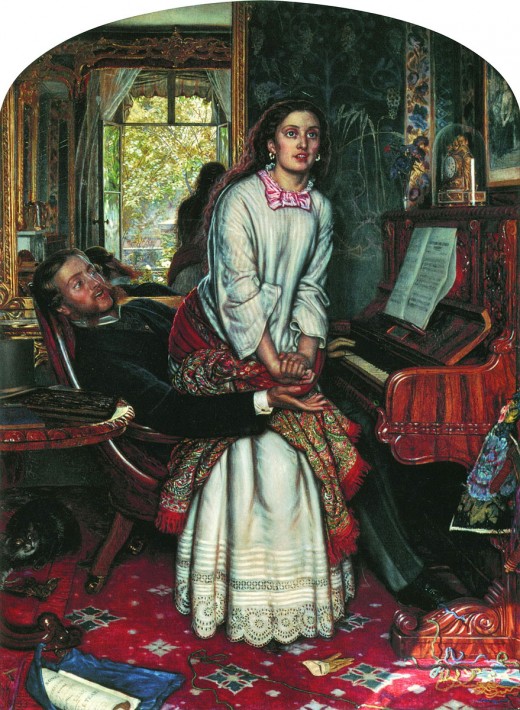
Holman Hunt's two most powerful pictures, to my mind, are "The Awakening of Conscience" and "The Shadow of Death".
In "The Shadow of Death", Holman Hunt depicts Jesus in his carpenter's workshop, with his arms raised in the crucifixion pose. It is one of the most powerful, one of the most religiously thrilling, pictures I have ever seen. You can see the prescient awareness on Jesus's face of his fate, and his loving acceptance of that fate, for the benefit of us all.
In "The Awakening Conscience", we can see the woman starting off the lap of the man, who appears to be a heartless roue, by the sly, loose expression on his face. We can see the woman realize what is about to happen, and that it's wrong. This one picture is so redolant of illicit sex; it's amazing to me--all the people still have their clothes on! How Holman Hunt managed to capture the illicit nature of the rendezvous at the piano without a word spoken! That is a big part of Holman Hunt's genius, to my mind. His pictures tell a story, vividly.
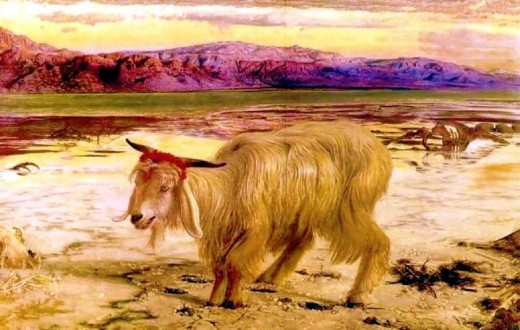
Holman Hunt's religious paintings eventually made him famous. In the mid-1850's, William Holman Hunt travelled to the Holy Land to get authentic landscapes for his religious work. He painted "The Shadow of Death" there, and, "The Scapegoat"; also, "The Light of the World", which now hangs in the chapel at Keble College, Oxford. Holman Hunt eventually built his own house in Jerusalem.
Holman Hunt, when he planned his journey to the Palestine, wrote:
"I need to prove, so far as my painting can, that Christianity is a living faith; the fullest realization of its wondrous story cannot unspiritualize it."
Holman Hunt was also a product of his time. In his foreign travels, he retained certain quintessentially British attitudes towards the native populations: he felt superior to the native inhabitants he encountered, particularly Jews and Arabs.
You can certainly see this in his painting "The Scapegoat".
Holman Hunt chose on of his very few old Testament subjects. He made the goat weak, and shaky in the knees. He littered the backdrop with the bones of its predecessors.
It's a very powerful image of the creature in its final throes; the dying remainder of a species on the verge of extinction, in punishment for its sins.
Threatened by the hostile native peoples and several natural calamities, Holman Hunt and his servants had immense difficulties posing this white goat on the saline plain. This goat, intended to represent the ancient story of the goat driven from the temple on the Jewish Day of Atonement, bearing the sins of the community, also represents the imperialistic attitude of British people at that time: the British prevail and the indigenous peoples are the scapegoats of an imperialistic society.
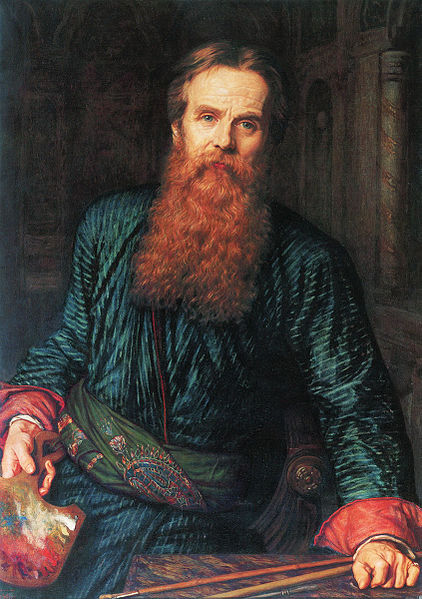
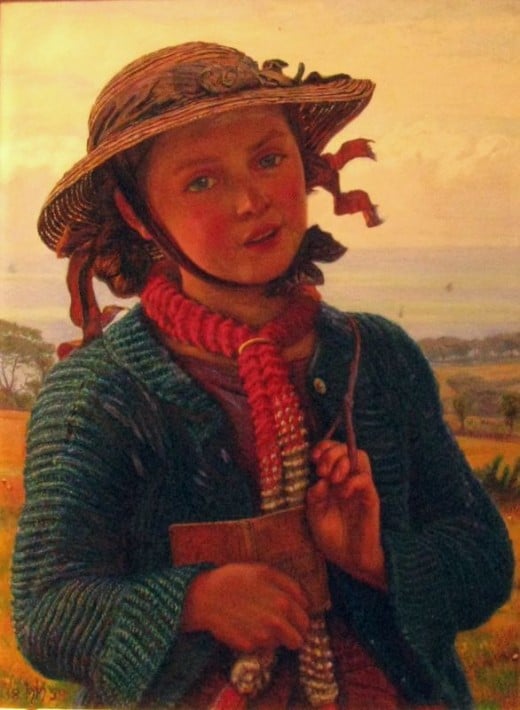
Holman Hunt was married twice: the first time to Fanny Waugh, who modelled for the figure of Isabella. She died in childbirth, in Italy. Holman Hunt loved her sincerely. He sculpted her tomb and had it brought to the English cemetery, where it lies beside the tomb of Elizabeth Barret Browning.
The second time Holman Hunt married, it was to Fanny's sister, Edith. This was illegal in England at the time, for a widower to marry his wife's sister, so Holman Hunt and Edith got married abroad.
This second marriage was somewhat of a scandal of the day, and also cost him a few friends. I'm not sure why. We wouldn't look at it the same way, today.
Holman Hunt's eyesight eventually failed him. He had to give up painting, towards the end of his life. His last painting was "The Lady of Shalott", which was completed by his assistant, Edward Robert Hughes.
William Holman Hunt died on September 7, 1910, in Kensington, London, at the age of 83.
His work lives on. His style remains alive over time; like much pre-Raphaelite art, the vivid colors and graphic subjects have lasting appeal and fame.
If you want MORE, click HERE:
- Hans Holbein The Younger
Hans Holbein the Younger was a popular portrait painter, born in Germany in 1497. He is perhaps best known for his work in his portraits sponsored by Henry the Eighth of England.
